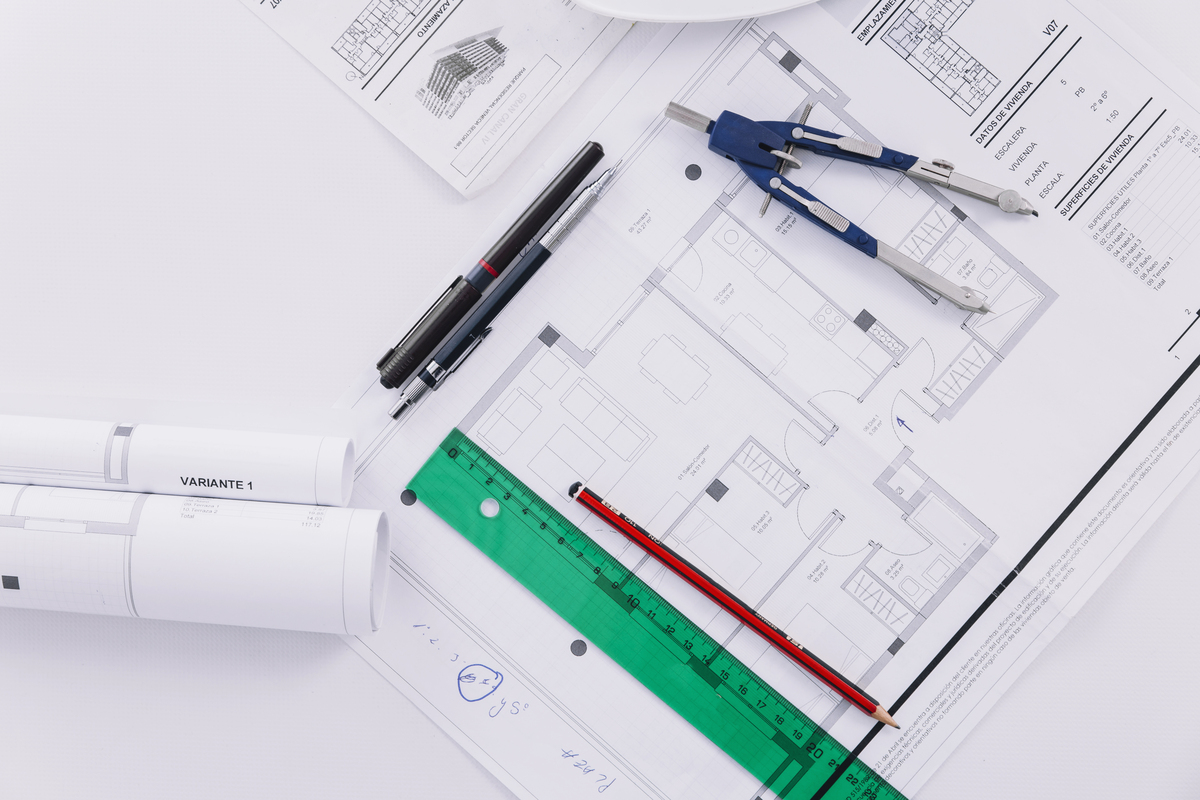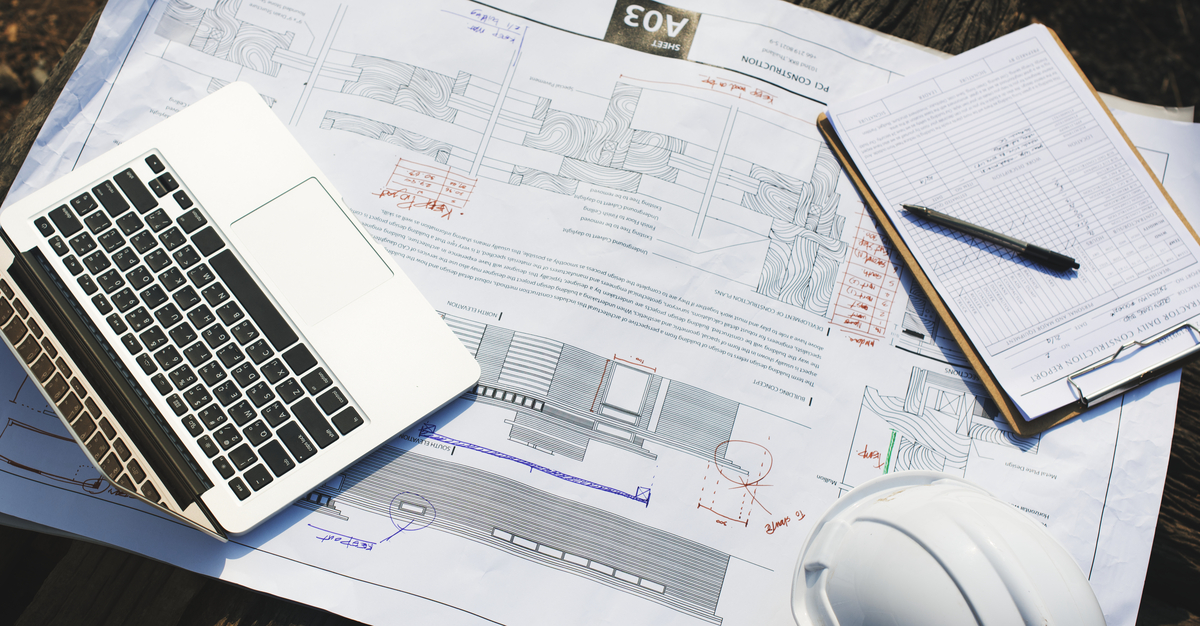Documentation is one of the most important components of a building project. Hundreds of adjustments may be made throughout the construction phase, depending on the project’s scale.
All parties engaged in the process are protected when construction documentation is done correctly. Owners, tenant-owned project management companies, architects, engineers, general contractors, construction management companies, and subcontractors are examples of this.
Types of construction documents direct the building process from beginning to end and help you keep your projects structured. When the appropriate people have access to types of construction documents, decisions can be made swiftly and actions can be taken to complete projects under budget and on schedule. When working in construction, you’ll encounter a lot of documentation.
All stages of a construction project, including design, permitting, and building itself, are governed by construction documents. Every major building project comes with architectural, structural, and schematic design documentation that clients, builders, and architects should all get familiar with.
It is impossible to overstate the significance of construction documents and drawings in the administration of building projects. By paying close attention to every element, including the site, design, and project management, they prepared the project for success. However, what are construction documents specifically, and what types of construction documents are available?
Table of Contents
What are Construction Documents?
An architect’s drawings created during the design development stage of a construction project are referred to as types of construction documents. During the building phase, they act as a project handbook and support local government inspectors and permitting organizations that must approve the project.
Each feature of an architect’s final design must be specified in two sets of construction drawings. Throughout the building process, one set of blueprints is known as the construction set and it is kept on the job site. Usually working under the supervision of a general contractor, they direct the actual construction administration. The local permitting authority, which is typically a division of a city or county government, receives the other set of designs, known as the permit set.
The plans are examined by the permitting authorities to ensure that zoning and construction codes are being followed safely.
The builder strictly adheres to the types of construction documents—from architectural designs to technical drawings to window schedules—through final project delivery to guarantee a safe, legal, and successful procedure. To obtain a certificate of occupancy from a permitting body, the completed building needs to correspond with the submittals that were given at the start of the project.
Suggested article to read: Best 10 Construction Document Management
Where do Types of Construction Documents Fit into the Architectural Design Process?
Phase three of the architectural design process consists of types of construction documents.
Phase 1, Schematic Design: The initial element of the building design phase is schematic design, which provides rough sketches of numerous design alternatives for the project. Each option may have a preliminary cost estimate included with these drawings.
Phase 2, Design and Development: The design team will update the sketch in this phase based on the feedback and changes made in the first phase. Updated cost estimates are also included in this phase.
Phase 3, Construction Documentation: To help contractors get ready for the following stages, this phase’s documentation includes comprehensive drawings of the finished design project, remarks, and construction specifications.
Phase 4, Bidding: In this stage, contractors are chosen to submit bids for the project. When submitting their bid, the contractors will make use of data from the completed construction set.
Phase 5, Management of Construction: Construction will start after a contractor has been chosen and the types of construction documents have been approved. This is the start of the administration phase, during which the architect will make sure the building follows the original concept, visit the job site, address any issues that may come up, and guarantee the delivery of a high-quality product.
To put it briefly, to start the building phase, types of construction documents formalize the architectural design, construction requirements, and scope of work.

What is the Purpose of Construction Documents?
The first step towards finishing a project is creating the construction designs and types of construction documents. They do the following to contribute to the success of construction projects:
Ensuring Effective Communication with all those Involved: A multitude of disciplines, including suppliers, engineers, architects, and general contractors, must work together and comprehend their respective roles for a building project to be successful. Everyone can understand the building duties and specifications concerning their part in the process thanks to the types of construction documents. These specifics improve project management effectiveness, allowing contractors to stay on schedule and minimize delays.
Assisting Contractors in Comprehending the Project’s Scope: Types of construction documents delineate the project’s scope, providing contractors with sufficient details to furnish a competitive bid. The cost of acquiring any required equipment, including whether to buy or rent equipment, is included in the price estimates.
Obtaining Building Permits: To apply for a building permit from the city or another authority to construct the structure, types of construction documents are needed.
Meeting Quality Standards: Governmental or industry specifications and requirements, such as building codes, zoning laws, and accessibility standards, may be included in construction designs and types of construction documents.
Reducing Risk: Having thorough planning enables contractors, engineers, and architects to spot possible issues before they arise. Types of construction documents also provide information for site-specific safety plans and other important paperwork.
The Importance of Construction Documentation
The significance of construction documentation is multifaceted. First and foremost, a project’s baseline is established by appropriate documentation.
An easier construction process is produced by a high-quality collection of construction documents, which contain drawings and specifications. The general contractor will have less uncertainty throughout construction if they have a set of precise drawings and clear requirements. This keeps costs down by removing the need for labor-intensive RFIs and rework.
Take into consideration a recent survey by ARC Document Solutions, which discovered that problems and challenges with types of construction documents can account for as much as one-third of project cost overruns.
Similarly, contracts also establish baselines for the projects. This can include types of construction documents between the:
- Owner and the design teams
- Owner and the general contractor
- The general contractor and subcontractors
Contracts should specify essential details such as the scope of work, baseline project schedule, monthly requisition needs, notification of delay processes, and other pertinent information.
The fact that types of construction documents offer a project’s history makes it essential as well. Say you have a three-year project underway. Even though you might work on ground-up construction for two years, the first year was dedicated to design development. Are you going to recall discussions that you had during the design phase, say, with the structural engineer when the project reached its third year? Furthermore, who’s to say that the project team doesn’t evolve?
Because the construction sector moves quickly, decisions can be made quickly over the phone or through emails. Formal types of construction documents, however, are a best practice that safeguards every team member involved in the building process. Complete documentation can preserve efficiency, lower the chance of overpaying, and raise the possibility of an end user being satisfied.

24 Types of Construction Documents
Construction documents are jigsaw pieces that fit together to provide a larger image of the layout, location, and physical attributes of the project. Without the proper paperwork, it is impossible to obtain building permits, and without permits, no legal construction is permitted. You can see how important building paperwork is from this.
Construction Documents
These are a few of the types of construction documents produced during the building stages. Even though each of these documents has a distinct function, they all work toward the same objective, which is to make the building project management process easier.
1. Construction Plan
A construction plan is an extensive construction document that lists every crucial planning element for a project, including the work breakdown structure, budget, timetable, and scope of work.
2. Construction Budget
A document that lists every expense associated with a construction project is called a construction budget. A construction budget serves primarily to assist project managers in maintaining budgetary control during project execution, hence preventing project cost overruns and ensuring project profitability. A construction contingency fund should also be included in a construction budget to cover unforeseen costs like project risk response.
3. Construction Schedule
A construction schedule is a written plan that outlines all the tasks that must be completed throughout a project’s execution phase. A construction timetable serves the primary function of ensuring that all project participants, including contractors and subcontractors, are aware of the deadlines for their deliverables, allowing the project to be finished on schedule.
Suggested article to read: Common Data Environment (CDE); Ultimate Guide 2024
4. Construction Estimate
The direct, indirect, and overhead costs of a building project, such as labor, materials, and equipment rental, are included in a construction estimate. The initial iteration of a construction budget is called a construction estimate.
5. Construction Lien Waiver
In situations where project owners are unwilling to pay for the construction work that has been completed, construction firms, contractors, and subcontractors are protected by a construction lien, which is a legal claim.
In contrast, a construction lien waiver is a written agreement that contractors and project owners exchange once the project is finished and the associated funds have been paid. A lien waiver is a formal agreement that releases a contractor from the obligation to file a construction lien.
6. Construction Submittals
For general contractors, construction project managers, design teams, or architects to approve the materials, tools, and procedures that a subcontractor plans to employ to carry out their construction job, the subcontractor must generate a construction submittal.
Construction submittals aid in ensuring that all of the work subcontractors do during construction comply with the requirements specified in the construction contracts.
7. Construction Change Order
If any changes need to be made to the original building design, a construction modification order is used. There are numerous explanations for why this could occur. For instance, during the execution phase, project owners may add additional work to the construction plan, requiring an expansion of the original scope of work as well as an increase in the amount of workers, materials, and equipment required.

8. Bill of Quantities
One of the crucial types of construction documents for planning is the bill of quantities. It outlines the labor needs as well as the amount and caliber of materials needed to finish a construction project. With the help of this building form, contractors can project prices and tailor their offers appropriately.
9. Schematic Design
A schematic design is a construction sketch that shows the general layout of the project, how the construction site blends in with the surrounding area, the building’s precise dimensions, and whether or not building laws and other regulations are followed. One step in the architectural design process is the schematic design phase, during which schematic designs are produced.
10. Punch List
Any tasks that must be finished before the building phase is deemed to be finished are listed on a punch list, which is a type of construction form. These are typically non-essential jobs, such as touch-up paint, clearing debris, or swapping out broken equipment.
11. Construction Specifications
The types of construction documents about the materials, workmanship quality, and scope of work for the many activities that comprise a building project are outlined in the construction specifications. To ensure that the project is finished by the criteria established by the owner and the construction design team, they offer extra information that should be used in addition to the construction drawings.
Before the construction business or general contractor starts work, the design team creates the construction specifications, which the project owner approves.
12. Construction Daily Report
A construction daily report is a written record of the work completed on the site during a given day, together with additional information that may be of interest to the general contractor, construction project manager, or site manager, such as incidents, weather, and inventories of materials and equipment.
13. Material Takeoff
A material takeoff, or MTO, is a construction firm that, using all of the relevant types of construction documents and papers, lists every material that will be needed for a project and specifies how much of each is needed. To precisely estimate the costs of various items is the primary goal of a material takeoff.
Construction Drawings
All types of construction documents that direct a project’s building phase are referred to as construction drawings. Architectural designs are extremely thorough, covering plumbing, mechanical, and electrical systems in addition to codes, safety plans, and sustainability standards.
Different nations have created their nomenclature standards due to the diversity of architectural designs. The US National CAD standard, which was created by the American Institute of Architects (AIA), the Building Specifications Institute, and the National Institute of Building Sciences, is the accepted system for naming building drawings in the country.
This is a brief synopsis of a few architectural drawings by the US National CAD standard.
14. A0 Sheets
The project information, often referred to as A0 types of construction documents or project information, is summarized on the cover page and includes information such as names, contact data, property details, zone use, building type, city PIN, site map, and regulations.
Additionally, there is the accessible notes and details sheet, which among other things (albeit not included for residential projects) specifies door width and sizes as well as the location of signage. The building’s location on the land, as well as landscaping, concrete work, and egress safety standards, are depicted on the site plan. Sometimes a more intricate landscape plan is incorporated.
15. A1 Sheets
A1 types of construction documents are floor plans that list all of the building’s components’ locations along with their precise measurements. In addition, there are numerous call-outs, door, window, and wall-type tags, and keynotes.

16. A2 Sheets
Sections and elevations are covered in A2 types of construction documents. Elevations are the level representation of a building’s outside facing. They display the elevations of the new and existing building components as well as the materials that will be added to or retained from the former. Keynotes provide further significant details regarding the external construction.
17. A3 Sheets
Cut-section drawings through the middle of the building are called A3 drawings or section types of construction documents. They display the height relationships between the inside and the ground plane outside, as well as the wall and foundation construction and floor-to-floor heights.
18. A4 Sheets
A4 sheets are large-scale views or enlarged plans. The primary one is the mirrored ceiling layout, which displays the perspective above and not downward. These consist of several kinds of ceiling materials including drywall, plaster, wood cladding, etc. The locations of the light switches for the ceiling-mounted lights are frequently included.
A power plan is also included in residential construction projects, which indicates the locations of data points and outlets for cable TV and internet access. It indicates where personal electronics and appliances are powered. These types of construction documents are mentioned in the electrical blueprints for larger installations.
The materials that will be used for the floors and walls are also included in the expanded blueprints. This is done with finished tags that refer to a finish schedule (details further down the list) which show manufacturer, product names, and other qualities.
19. A5 Sheets
A5 paper is all about the detailed types of construction documents. They display numerous wall kinds, built-in furniture, power outlet locations, light and switch configurations, and element heights. Though they are not the same as homes or businesses, interior elevations must be documented for both.
20. A6 Sheets
Schedules are on A6 sheets. Here, “scheduled” refers to a spreadsheet rather than a timeline. They are used to record a variety of specific product details, such as sizes, varieties, finishes, and so forth.
21. S Sheets
Structural types of construction documents, or S sheets, are used consistently throughout the project. A certified structural engineer created the designs, which include the layout of each level, the location and dimensions of the steel and wood framing, the concrete footing, and any additional structural details.
22. M Sheets
The project’s mechanical types of construction documents, or M sheets, show the plumbing and electrical systems. Usually, the engineer who supplied the S sheets delivers them. These drawings include ductwork and the types of air handling systems that will be employed, along with the locations and sizes of the plumbing and electrical systems.
23. P Sheets
P sheets are plumbing drawings that specify the diameters of the waste and potable water pipes to be utilized in the system. Additionally, vent risers are placed in some areas to safely let sewage air exit the structure.
24. E Sheets
E sheets refer to specifics shown in the electrical types of construction documents. All of the building’s outlets, along with the switches that operate them, are marked out. They go into detail about the boxes needed to handle the electrical equipment and the kind of wire that is needed.

How to Streamline and Simplify Types of Construction Document Management?
Having access to all of the aforementioned papers will help you look for types of construction documents more quickly and easily. Approximately one-third of the time spent by construction experts is spent looking for documents such as these.
Thankfully, technology can assist in organizing types of construction documents and centralizing your data so that it is accessible when and when you need it.
1. Centralize Your Construction Data
Centralizing your construction data is one of the finest strategies to maintain organization. The most valuable data is that which is easily obtainable and analyzed. Decisions may need to be made with less information when data is difficult to find, which raises the possibility of mistakes on a project.
Consider using a shared data environment rather than storing types of construction documents across various places or isolated engines. Everything you accomplish in this environment is centralized, giving you and any other team member instant access to all the information you require.
For instance, you can gather, manage, analyze, and disseminate types of construction documents far more effectively if you store them in a centralized cloud-based system. A consolidated data environment makes it easier for your team to collaborate and helps them stay clear of errors and duplication. Additionally, you may access your data online, so you can view it from anywhere, even at the workplace or on-site.
2. Make Types of Construction Documents Accessible Anywhere
About centralizing types of construction documents, useful cloud-based construction management programs such as Autodesk Construction Cloud can facilitate data access from any location while maintaining security and organization.
Examining more closely, a common data environment (CDE) is among the most effective methods for gathering, organizing, and sharing all types of construction documents during the project. Since they may access graphical and non-graphical data from all teams working on the same project, a CDE, which is essentially a digital hub, facilitates collaboration amongst all project participants.
To transition to a more data-driven environment, one must first adopt technologies that consolidate and integrate information.
3. Optimize Document Management Workflows
Finally, you can create more efficient and standardized operations by centralizing your types of construction documents using the appropriate technology. Simple inquiries like “Who needs to review and approve changes” and “Who can access or change data in this new system?” will help you determine the optimal workflow for your business.
Since every business is unique, you should design your workflow around the requirements of the project and the members of your present team. Your first system may need to be adjusted, but once you’ve found one that works for you, you should remain with it and onboard new employees according to that workflow as needed.

Conclusion
Design and construction are two independent but related, usually sequential functions; the first is creating documents, and the last is interpreting and turning these documents into reality—a building or building complex. Building design and development is a complex process that requires several sets of documents throughout its lifecycle. As a result, all of these drawings are essential for the building’s completion and ongoing maintenance.
Construction papers are also thought of as the design that is created on paper after the schematic design stage, which includes creating models, building sketches, and other conceptual discussions. Types of construction documents act as guidelines for the principal contractor from the architects. They outline how a contractor will turn the architect’s concept into a finished structure using specifications and drawings.
Any building project must have construction documents since they are essential to its success. Types of construction documents serve to prevent misunderstandings and errors by clearly defining the objectives and requirements of all parties engaged in the project. It is crucial to comprehend the function of construction documents in the building process, regardless of your position as an owner, architect, contractor, or subcontractor.
A comprehensive set of construction documentation makes it easier to keep the project on schedule, within budget, and with minimal deviations from the original plan. It also gives a clear picture of the expectations and requirements of the project and reduces misconceptions and errors.
Resources:
Avvir | DesignBlendz | TheConstructor | Cembs | ProjectManager | MasterClass | Autodesk | BigRentz | Levelset | BuildEnd
For the pictures: Freepik





